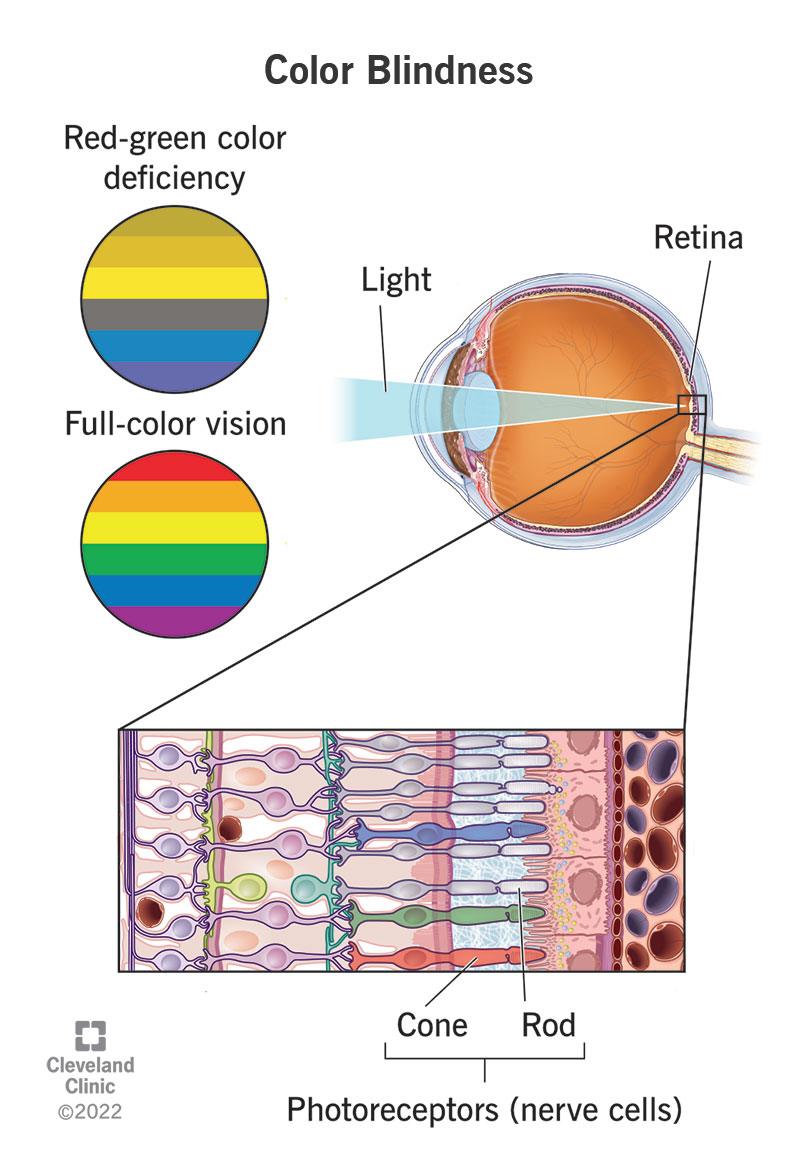Contents

Source: Wikipedia
Understanding Color Vision
Introduction to Color Vision
Color vision is a fascinating aspect of how we perceive the world around us. It allows us to distinguish different wavelengths of light as various colors, enriching our visual experiences. This ability is not only limited to humans but is also present in many animals, each having unique adaptations to their environments.
Physiological Basis of Color Vision
In humans, color vision is facilitated by photoreceptors in the retina, which is the light-sensitive layer at the back of the eye. These photoreceptors are divided into rods and cones. While rods are responsible for vision in low-light conditions and do not contribute to color perception, cones are active in well-lit conditions and enable us to see colors. Humans typically have three types of cones, each sensitive to different wavelengths of light, corresponding to long (L), medium (M), and short (S) wavelengths.
Trichromatic Vision
The human eye’s ability to perceive color is known as trichromatic vision. It involves the interpretation of signals from the three types of cones, allowing the brain to construct a color image. This system is capable of distinguishing millions of colors based on the varying levels of cone activation.
Spectral Sensitivities and Color Perception
The spectral sensitivities of the L, M, and S cones are not evenly distributed and often overlap. For instance, the L and M cones are highly responsive to light around the 550 nm wavelength. Despite their overlapping sensitivities, the brain can still discern colors based on the relative signal strengths from each type of cone.
Challenges in Color Perception
While our trichromatic vision is effective, it has its limitations. For example, the brain cannot differentiate between monochromatic light at 600 nm and a combination of 550 nm and 600 nm light. This limitation arises because the brain only processes relative excitation strengths, not the specific wavelengths causing them.
Color Vision in Animals
Animals exhibit a wide range of color vision capabilities. Some species, like cats, have dichromatic vision, which limits their color perception but enhances their sensitivity and spatial resolution. Others, such as certain insects, possess more than three types of photoreceptors, allowing them to see a broader spectrum, including ultraviolet light.
Colors of Objects and Light Sources
Our perception of an object’s color is influenced by the light source illuminating it. Ideally, objects are viewed under white light, which has a balanced spectrum. However, different light sources can alter the perceived color of objects. The color rendering index (CRI) of a light source measures its ability to accurately reveal the colors of objects compared to natural light.
Processing of Color Information
Color perception is not merely a physiological process but also involves complex brain functions. Initial image processing occurs in the retina, but further analysis happens in the brain’s visual cortex. This includes compensating for the color of ambient light to maintain consistent color perception of objects.
Deficiencies in Color Vision
Not everyone experiences color vision in the same way. Color vision deficiencies, such as red-green color blindness, are relatively common, especially among men. These deficiencies arise from anomalies in cone function and can range from mild to severe, affecting how colors are perceived.
Conclusion
Color vision is a complex and fascinating aspect of human and animal perception. It enables us to experience the world in vibrant detail, although it comes with limitations and variations across different species. Understanding the intricacies of color vision not only deepens our appreciation of this sensory ability but also highlights the diversity of life on Earth.
Source: Cleveland Clinic
Feel free to comment your thoughts.




